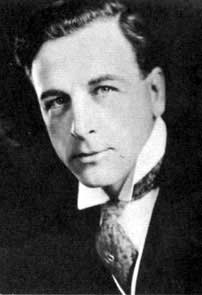Milton Sills
| Milton G. G. Sills | |
|---|---|

Sills in a 1920 publicity photograph
|
|
| Born |
January 12, 1882 Chicago, Illinois, U.S. |
| Died | September 15, 1930 (aged 48) Los Angeles, California, U.S. |
| Occupation | Actor |
| Years active | 1906–1914 (stage) 1914–1930 (film) |
| Spouse(s) |
Gladys Edith Wynne (m. 1910–25) (divorced) Doris Kenyon (m. 1926–30)(his death) |
Milton George Gustavus Sills (January 12, 1882 – September 15, 1930) was an American stage and film actor of the early twentieth century.
Sills was born in Chicago, Illinois into a wealthy family. He was the son of William Henry Sills, a successful mineral dealer, and Josephine Antoinette Troost Sills, an heiress from a prosperous banking family. Upon completing high school, Sills was offered a one-year scholarship to the University of Chicago, where he studied psychology and philosophy. After graduating, he was offered a position at the university as a researcher and within several years worked his way up to become a professor at the school.
In 1905, stage actor Donald Robertson visited the school to lecture on author and playwright Henrik Ibsen and suggested to Sills that he try his hand at acting. On a whim, Sills agreed and left his teaching career to embark on a stint in acting. Sills joined Robertson's stock theater company and began touring the country.
In 1908, while Sills was performing in New York City, he attracted the notice of Broadway producers such as David Belasco and Charles Frohman. That same year he made his Broadway debut in This Woman and This Man. From 1908 to 1914, Sills appeared in about a dozen Broadway shows.
In 1910, Sills married English stage actress Gladys Edith Wynne, a niece of actress Edith Wynne Matthison. The union produced one child, Dorothy Sills; Gladys filed for divorce in 1925. In 1926, Sills married silent film actress Doris Kenyon with whom he had a son, Kenyon Clarence Sills, born in 1927.
In 1914, Sills made his film debut in the big-budget drama The Pit for the World Film Company and was signed to a contract with film producer William A. Brady. Sills made three more films for the company, including The Deep Purple opposite Clara Kimball Young.
By the early 1920s, Sills had achieved matinee idol status and was working for various film studios, including Metro Pictures, Famous Players-Lasky, and Pathé Exchange. In 1923 he was Colleen Moore's leading man in the very successful Flaming Youth, but his biggest box office success was The Sea Hawk (1924), the top-grossing film of that year. In 1926 he wrote the screenplay for Men of Steel, also starring in it along with Kenyon.
...
Wikipedia
